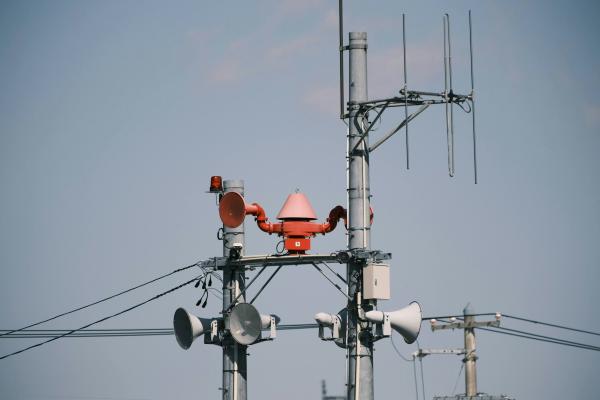Lloyd’s Register Foundation (LRF) launched its latest world risk poll at Climate Week in New York in September. LRF has a strong interest in resilience – it supports the Resilience Rising Consortium of which Resilience First is a member - and its poll provides a unique opportunity to understand how people from countries across the world experience and perceive risk.
With almost 126,000 people contributing from 121 countries in every global region, the poll provides a rich source of data on risk and resilience for individuals, communities and countries. It identifies resilience gaps, quantifies risk, illustrates what is working and, where there are differences, can identify the reasons why one is more resilient than another. Given the spread of contributors, the poll reaches populations which do not often have a voice, often in some of the world’s most impoverished and/or poorly-structured countries.
As businesses take a greater interest in the resilience of those that they serve and service, as well as their own organisational resilience, the data gives a strong indication of what a business needs to be aware of if it is to aid not just its own resilience, but that of society at large.
The full report on the poll is available at 2021 Report: A Resilient World? Understanding vulnerability in a changing climate - The Lloyd's Register Foundation World Risk Poll.
Here are some of the highlights and key messages that were covered during the launch event in New York.
Resilience varies significantly at a global level – in order to allow comparisons between respondents, each was given a resilience index score based on their responses. This summary indicator of the respondents’ experiences or perception of risk meant that differences could be discerned between countries. The top five scoring countries were: Vietnam, Norway, Sweden, Switzerland and Singapore. The bottom five were: Pakistan, Gabon, Lebanon, Togo and Afghanistan
Community support is higher in low-income countries – overall 23% of respondents world-wide believed that their neighbours cared about them a lot. But this was noticeably higher (35%) in low-income countries than high income (20%)
People with internet access feel that they are better able to protect themselves – in high income countries 91% say that they have it. This reduced to 27% for low-income but, even here and among those with no access, they believed that internet access would help them protect themselves
New measure reveals global financial insecurity – the length of time a respondent felt they could survive with no income varied with around one third indicating less than one month. This was least in North Africa and South Asia. In Europe, Australasia and North America the vast majority believed they could survive more than one month and around half, over four months
One in five globally has experienced discrimination – this was most prevalent in countries in Africa and South America but notably the US were among the highest reporting
Countries experiencing most disasters have low resilience index scores – this may be expected and the correlation between low-income and frequency of disaster may account for some of this. However, notably, the Philippines and Iceland both had higher resilience scores despite being subject to a higher disaster incidence
Severe weather events – a motivation for being prepared – predictably of those who had experienced a climate-related event almost half expressed the view that climate change posed a very serious threat. However, among those who had not had that experience, there were still 40% with the same opinion on climate threat
Many of the conclusions could be said to be expected. However, some less so. Vietnam in South Asia, for example, is relatively low income but scores better for resilience than much wealthier countries and it is likely that its citizens have a much higher sense of community than many other countries. It is also possible that its government is more active in participation and engagement.
Conversely, Lebanon in the Middle East, scores relatively poorly and this may be because of political discontent and economic insecurity.
Drilling down into the detail of responses can bring up other striking examples of difference, e.g. men have slightly higher resilience scores than women, urban slightly higher than rural, and integrating this with other data such as locality or race can give pointers on the reasons behind a poorer resilience score, and therefore the actions that may be required to improve resilience for some groups.
Of course all of this can only be indicative, but the diverse nature of the poll, and its focus on risk and resilience, means that this is an excellent starting point for businesses to understand the issues that policymakers, governments and authorities will need to address in future resilience planning, and where the business community could best aid that.



